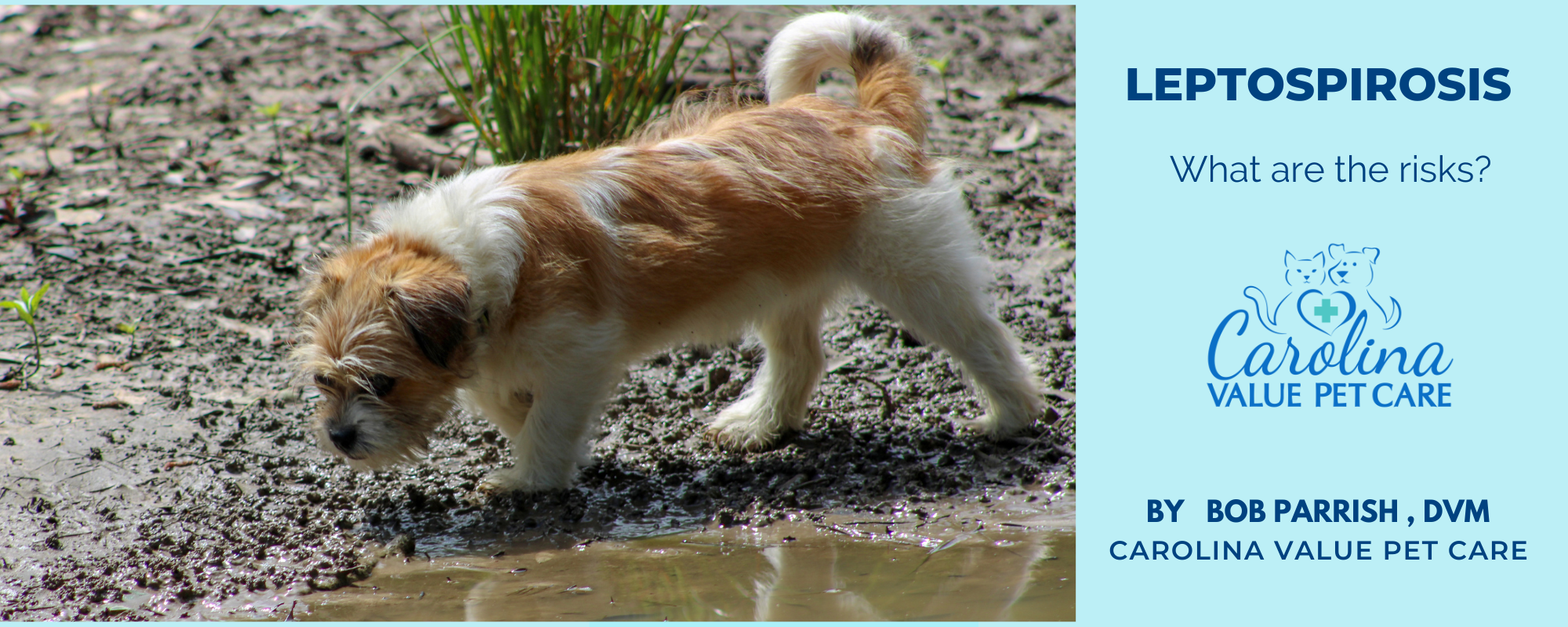Leptospirosis: A Danger to Pets & People
There are very few diseases you can get directly from your pet, but one of them is especially easy to contract: Leptospirosis, a highly contagious illness spread through the urine of infected wildlife.
Dogs don’t even need to make contact with wildlife to get the disease. Drinking water from puddles or streams or ingesting dirt that’s contaminated with the urine of common backyard animals like squirrels, raccoons, and foxes is enough to make your dog very sick. You should also know that “lepto” is zoonotic—meaning it can be easily transmitted to people.
Here are some commonly asked questions and answers about Leptospirosis.
What is Leptospirosis?
Leptospirosis (Lepto, for short) is a bacterial disease that can infect pets, farm animals, wildlife and even humans.
The disease-causing bacteria is spread through the urine of infected animals, and can survive for up to 6 months in soil and surface water such as lakes, stream, rivers and stagnant areas of water such as puddles.
Leptospirosis can cause fever, kidney failure, jaundice (from liver damage) and death.
How is Leptospirosis spread?
Lepto is usually spread when an opening in the skin or mucous membranes, such as eyes, nose or mouth, comes in contact with infected urine. Your dog can be exposed to the bacteria by drinking, swimming, or walking through contaminated water. The curious nature of your dog, following their nose, may also bring them in contact with infected urine.
Rats, mice, raccoons, skunks, deer and possums as well as cattle and pigs are the primary carriers of Lepto.
Is Leptospirosis a threat to humans?
The Centers for Disease Control reports up to 200 cases of Lepto occur each year in the U.S. in people. While the disease results in flu-like symptoms, in some situations, the disease can develop into a life-threatening illness.
What are the clinical signs and symptoms of Leptospirosis for a pet?
Leptospirosis primarily affects the kidneys and/or liver. Signs and symptoms of Lepto in dogs appear 4 to 12 days after exposure. Sometimes, the infections are mild and minimal problems may occur. However, more severe cases will first start as a fever, followed by loss of appetite and weight loss. Then vomiting, sluggishness, depression, muscle pain, diarrhea, and bloody urine may occur.
How do you diagnose Leptospirosis? How important is Leptospirosis treatment for dogs?
Tests can be run to determine if your dog has Leptospirosis. To treat the disease, we use antibiotics and fluids. If left untreated, your dog could develop a fatal kidney failure or liver failure. If a dog recovers without treatment, it can become a carrier and shed the bacteria in the urine for up to 1 year.
What dogs are at highest risk of getting Leptospirosis ?
Your dog is considered at risk of contracting Lepto if…
- Wildlife (primarily raccoons, skunks, possums, rats, mice and deer) comes into your yard, or your dog has access to areas where wildlife live.
- Your dog has access to livestock (primarily cattle and pigs).
- Your dog has access to puddles in your backyard, ponds, streams, lakes, wet areas or areas where water stands.
- You take your dog camping.
- Your dog has access to a wooded area.
How can I protect my dog and prevent him / her from getting Lepto?
Vaccinating your dog annually against Leptospirosis will prevent the disease…and keeping your dog from drinking, swimming in or wading in water that could potentially be contaminated with animal urine.

